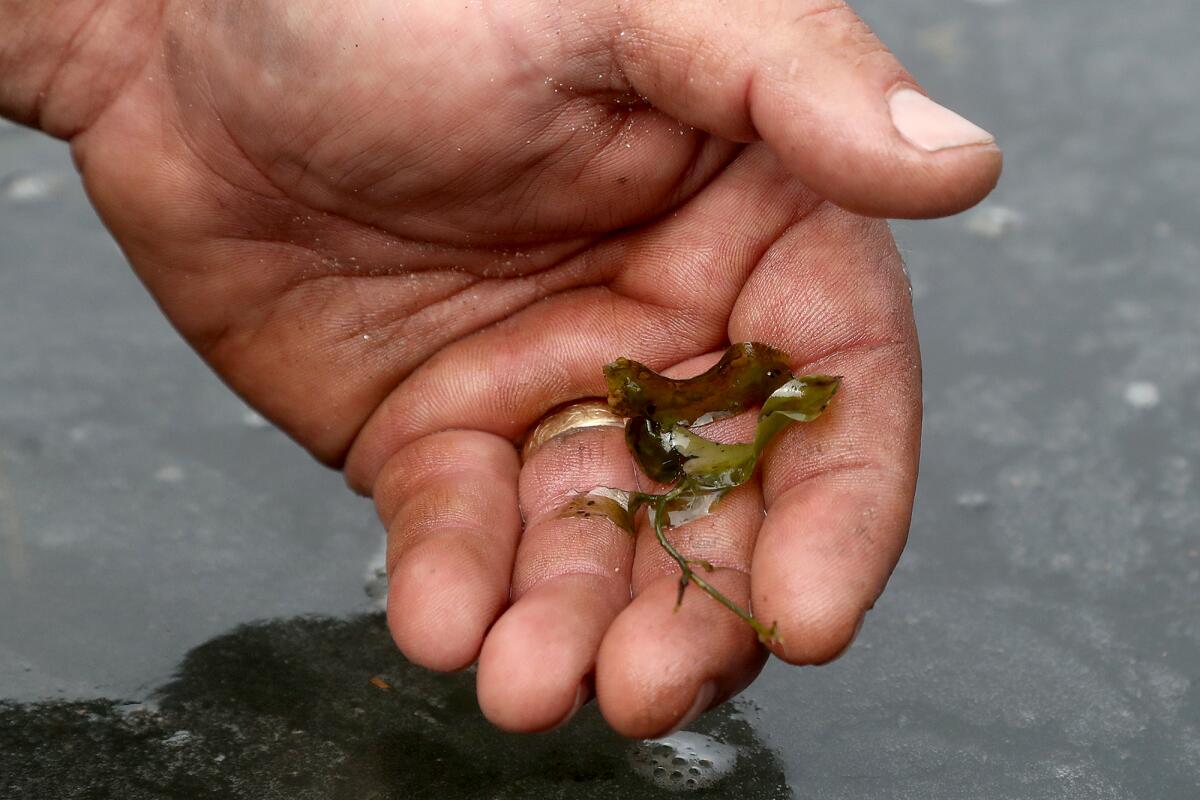Cleaning of Newport Harbor of invasive algae species completed, but diver surveys will continue

Vacuum dredging of an invasive algae species out from Newport Harbor was completed earlier this month, but city officials extended a local emergency declaration on the issue to allow for federal and state officials to complete the final stages of its removal.
Divers will soon be conducting surveys in and around Newport Harbor over the next few weeks to check for any other signs of Caulerpa prolifera, a species of algae that is not harmful to humans but could have damaging effects on Newport Harbor’s ecosystem.
A team of divers, setting out from China Cove, completed removal of the algae by way of vacuum pumps on July 12.
The algae collected was brought onshore, where it and other solids were filtered out from the ocean water. The filtered water was then discharged.
Divers continued to pick up stray pieces and performed final sweeps.
City officials said a local emergency declaration was necessary to secure funding for the aquatic plant’s removal. The work is funded by the California State Water Resources Control Board.
The extension made last week will continue the emergency declaration by another 60 days, which is expected to allow the state and federal officials time to complete the surveys of Newport Harbor.
Those surveys are funded by the U.S. Fish and Wildlife Service and National Marine Fisheries Service.
Signs of the algae were discovered in March by a diver and it was positively identified as Caulerpa prolifera by the Orange County Department of Agriculture. State officials were notified in April.
The species is closely related to Caulerpa taxifolia, which was discovered in Huntington Beach in the early 2000s and was eradicated by 2006.
The species is native to Florida and other subtropical and tropical areas. City staff said this is the first time that the species has been positively identified on the West Coast.
It is capable of recolonizing by fragmentation, meaning that parts of the plant that may break off can become viable plants elsewhere.
It is not clear how the Caulerpa prolifera entered Newport Harbor.
All the latest on Orange County from Orange County.
Get our free TimesOC newsletter.
You may occasionally receive promotional content from the Daily Pilot.




